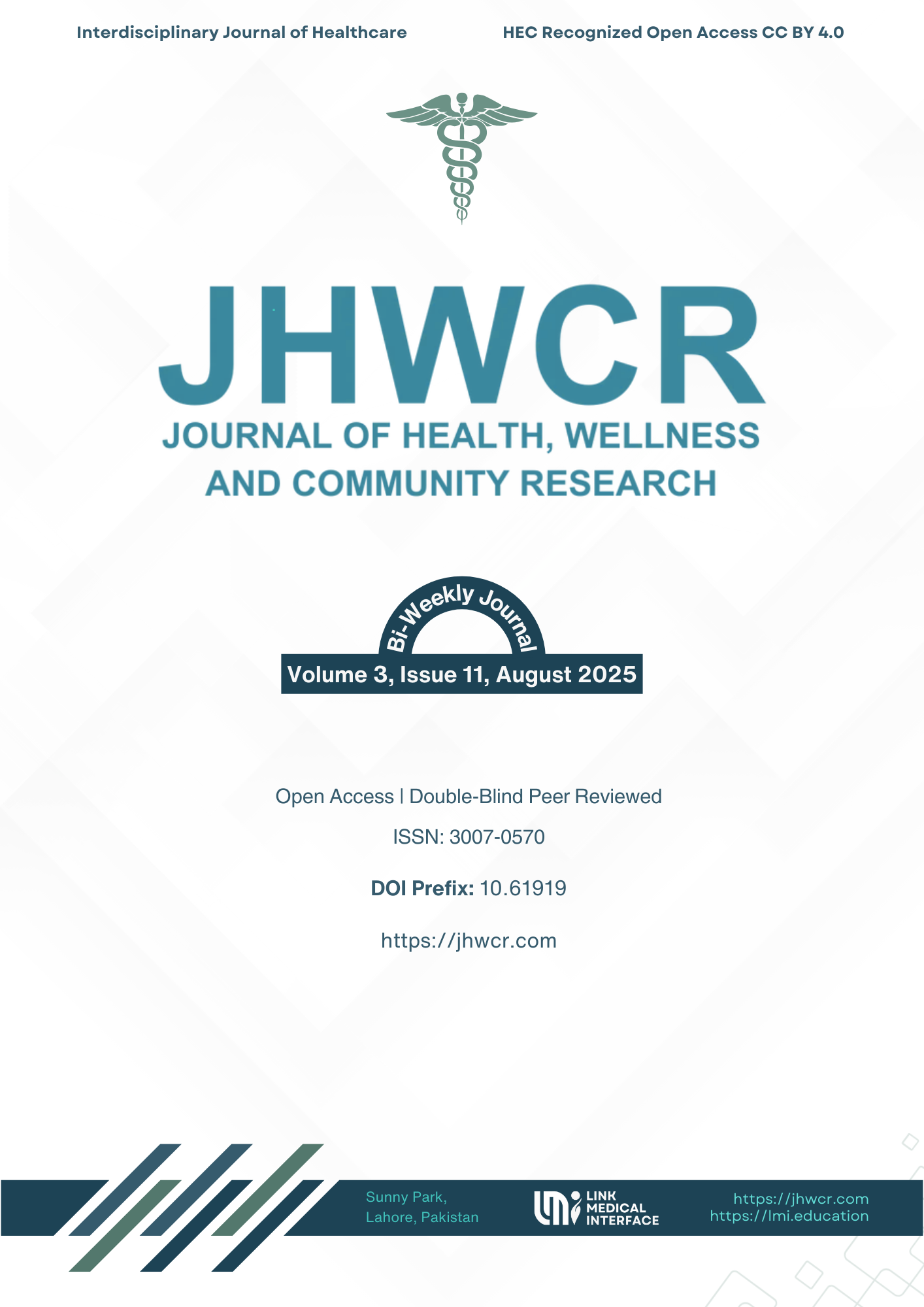Prevalence of Cubital Tunnel Syndrome Among Freight Handlers
DOI:
https://doi.org/10.61919/0hpv6d65Keywords:
Cubital tunnel syndrome, ulnar nerve, occupational health, freight handlers, QuickDASH, prevalenceAbstract
Background: Cubital tunnel syndrome (CuTS) is the second most common peripheral nerve entrapment after carpal tunnel syndrome, caused by ulnar nerve compression at the elbow. Freight handlers are at high risk due to repetitive elbow flexion, heavy lifting, and prolonged pressure on the elbow, yet little is known about the prevalence and functional burden of CuTS in this group. Objective: To determine the prevalence of CuTS among freight handlers in Faisalabad, Pakistan, and to evaluate its impact on upper-limb function. Methods: A cross-sectional study was conducted from February to May 2023 at three freight-handling sites. A total of 132 handlers aged 29–39 years were screened using the Elbow Flexion Test to diagnose CuTS and assessed with the QuickDASH questionnaire for functional disability. Demographic variables and occupational exposure duration were recorded. Prevalence estimates were reported with 95% confidence intervals, and group comparisons were analyzed using t tests, chi-square tests, and logistic regression. Results: Fifty-two participants (39.4%, 95% CI: 31.2–48.1) tested positive for CuTS. CuTS-positive workers had significantly higher mean QuickDASH scores (58.3 ± 11.4) compared to unaffected workers (12.6 ± 7.2, p<0.001), with severe impairments in grip, work-related tasks, pain, and sleep. Occupational tenure ≥3 years was associated with increased odds of CuTS (OR 2.42, 95% CI: 1.11–5.29, p=0.026). Conclusion: CuTS is highly prevalent among freight handlers and is associated with severe functional disability. Ergonomic interventions, early screening, and workplace health policies are urgently needed to mitigate risk.
Downloads
Published
Issue
Section
License
Copyright (c) 2025 Isma Ahsan, Eman Khalid, Laiba Asad, Noreen Fatima (Author)

This work is licensed under a Creative Commons Attribution 4.0 International License.


